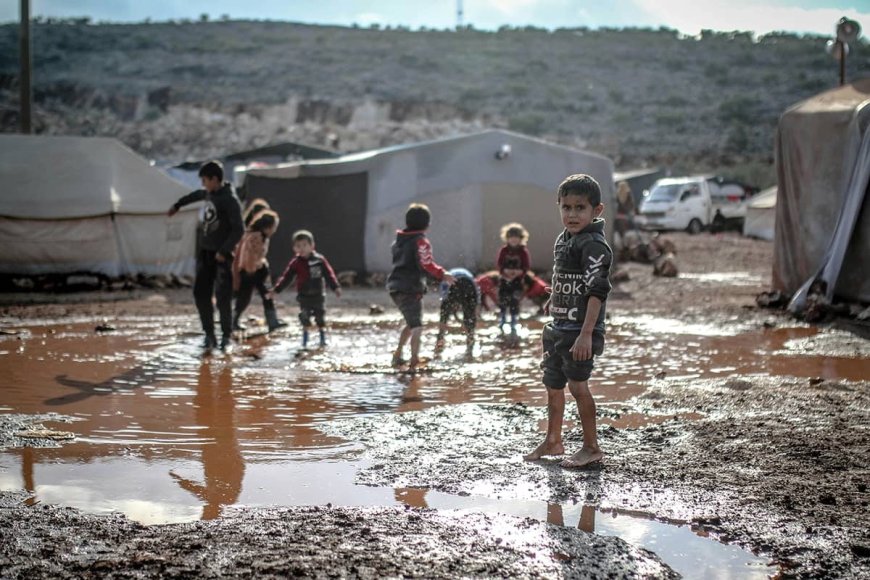World’s Biggest Polluters Least Impacted by Conflict and Environmental Damage: Study
The world’s biggest polluters are also the most protected from the environmental harm they helped create, according to a study by researchers from University of Notre Dame and University of Wyoming. Meanwhile, the least culpable countries face the most significant threats, including increased potential for violent conflict. The findings challenge conventional understandings of how conflict […] The post World’s Biggest Polluters Least Impacted by Conflict and Environmental Damage: Study appeared first on EcoWatch.

The world’s biggest polluters are also the most protected from the environmental harm they helped create, according to a study by researchers from University of Notre Dame and University of Wyoming.
Meanwhile, the least culpable countries face the most significant threats, including increased potential for violent conflict.
The findings challenge conventional understandings of how conflict and the environment are intertwined, highlighting inequalities that result in disproportionate harm to nations in the Global South.
“Our study highlights the gap in current research evaluating the connection between ecological sustainability and peace,” said study co-author Richard Marcantonio, an assistant professor of environment, peace and global affairs at University of Notre Dame’s Keough School of Global Affairs, in a press release from the university. “This is crucial for designing evidence-based policies that address global inequalities and support human dignity.”
Marcantonio said the link between conflict and environmental risks is well-documented. Conflict, he said, often leads to depleted resources and environmental deterioration, with the potential for environmental risks like resource scarcity and climate change to worsen or trigger conflicts by creating disputes over limited resources or displacing people.
Professor Richard Marcantonio explores how environmental violence—pollution and unsustainable practices—violates the right to a healthy environment, disproportionately affecting marginalized communities. Open access in English, French, & Spanish. #EnvironmentalJustice tinyurl.com/mut6hhwu
[image or embed]— Politics and Rights Review (@polrightsrev.bsky.social) December 26, 2024 at 11:56 AM
“Conflict and environmental risks are simultaneously on the rise globally. These two phenomena often interact both in cause and consequence. Together environmental stresses and conflict increasingly challenge people’s ability to produce a livelihood and raise rates of human displacement, undermining human security,” the authors wrote in the study.
Marcantonio said that, overall, the greater the environmental risk, the higher the level of conflict, with social norms and institutions playing a key role in their connection.
Earlier research suggested that the opposite could be true as well — that high ecological sustainability was correlated with peace. However, Marcantonio said the new study found that that was not the case at all.
Marcantonio explained a major difference in how the new study measured sustainability and peace. Previous studies had used conventional measures for both characteristics, and the measurements overestimated them in wealthier countries. The new study, on the other hand, used more holistic measurements that accounted for participation in intrastate conflicts that cause harm to other countries, in addition to the nations’ total ecological footprint.
Marcantonio said this resulted in a more accurate and thorough assessment, highlighting pressing global inequalities.
“In evaluating where peace is most prevalent, our results reaffirm the need to ask and answer the question of how to achieve a good life for all within planetary boundaries — or, in this case, comprehensively sustainable peace for all,” Marcantonio said. “And, although our results suggest that ecological sustainability and peace are not positively correlated, this relationship is not a necessary one. Ecologically sustainable peace is possible.”
Marantonio’s co-author of the study was Sean Field, an assistant professor at University of Wyoming’s School of Computing and Department of Anthropology.
Marcantonio said the findings suggest directions for further work that may provide additional evidence for effective sustainability and peace policies.
“Future research should focus on how comprehensively sustainable peace can be attained and sustained for all to enjoy without potentially externalizing conflict risks,” Marcantonio said. “As rates of conflict and environmental risk continue to rise globally, exploring and determining how to effectively address this paradox is essential.”
The post World’s Biggest Polluters Least Impacted by Conflict and Environmental Damage: Study appeared first on EcoWatch.



















































